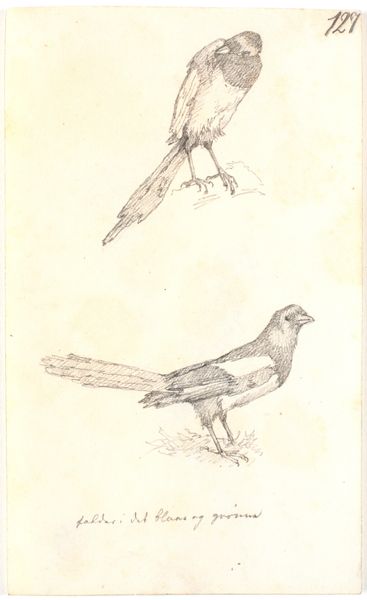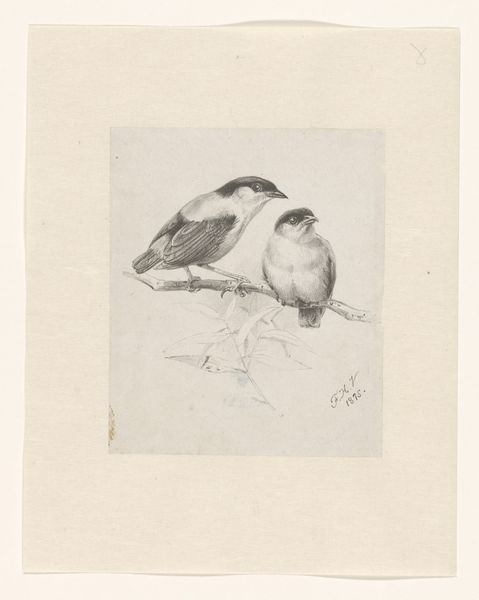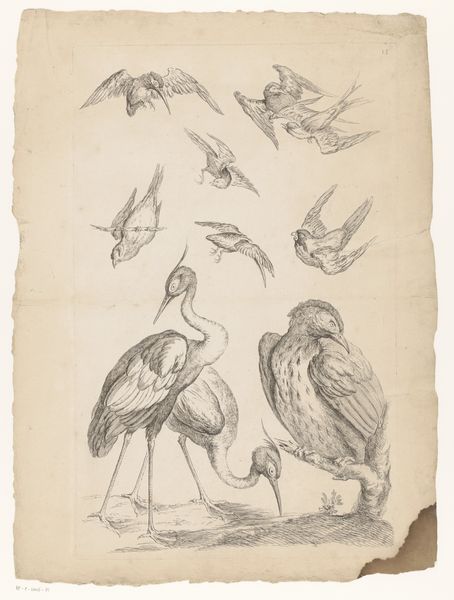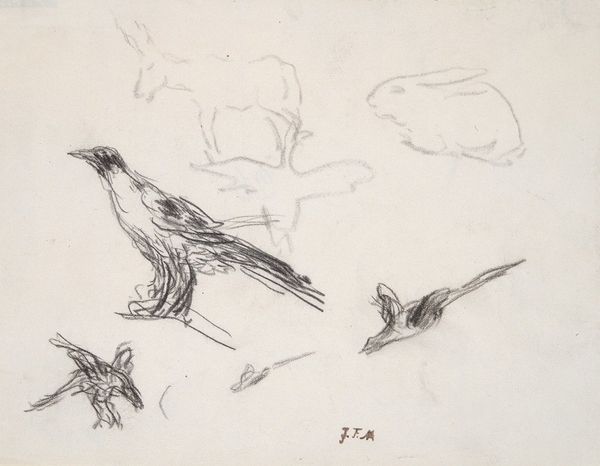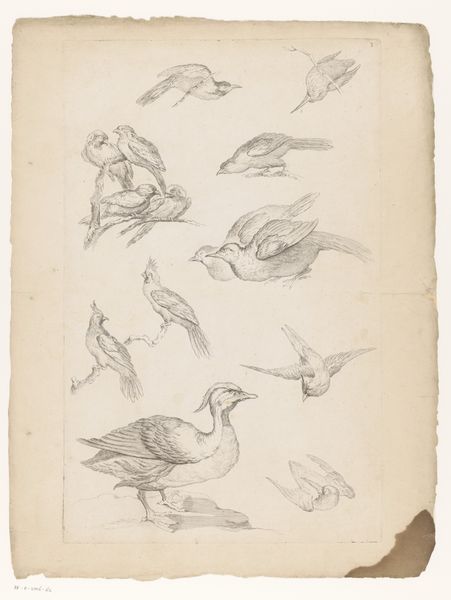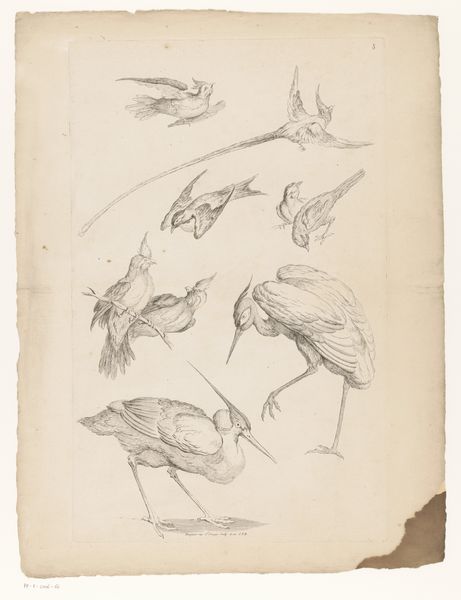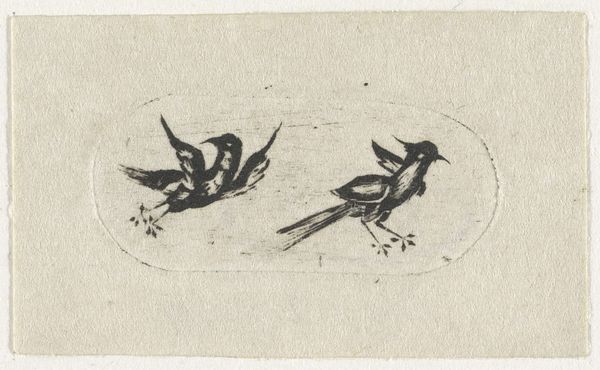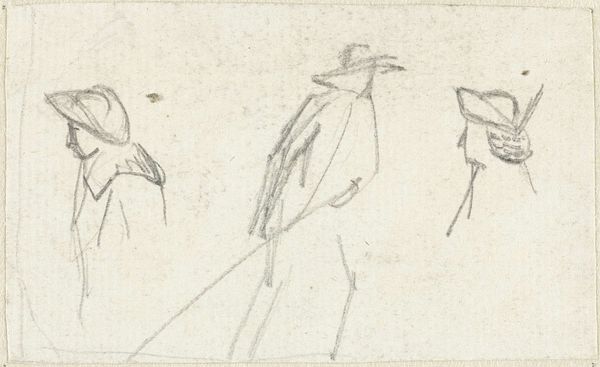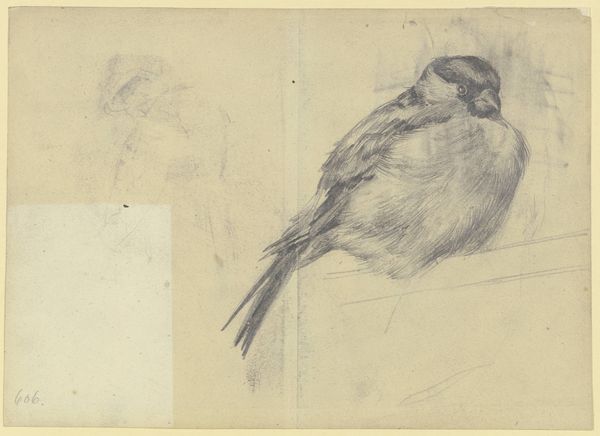
Dimensions: height 142 mm, width 116 mm
Copyright: Rijks Museum: Open Domain
Editor: So, here we have "Four Sketches of a Pied Crow" by Julie de Graag, created sometime between 1887 and 1924. It's a pencil drawing. There’s something so immediate and charming about these sketches; they feel so alive. What catches your eye about this work? Curator: The crow, of course, has a long and layered history in symbolism. Consider its appearance in folklore across cultures – sometimes a trickster, sometimes a guide to the underworld, and often associated with wisdom and foresight. Does De Graag’s choice of the crow suggest a commentary on knowledge or perhaps even mortality? What do you see in their poses? Editor: They seem so ordinary, just birds doing bird things. I hadn’t considered such heavy symbolism! Curator: Think about the medium, too. Pencil allows for capturing fleeting moments. Are these quick studies done from life, or do they spring from memory, lending an ethereal quality? Perhaps De Graag wasn’t making grand statements but was, instead, interested in the humble beauty of everyday existence? Do the differing perspectives affect their meaning for you? Editor: That’s interesting… It does make me think about just capturing the everyday, like a visual diary. The way the crow at the bottom is looking downward. Maybe she’s inviting us to notice what’s at our feet. Curator: Precisely. We are interpreting traces of movement. Every quick mark reveals both the artist's observation and her gesture. And remember, the absence of colour enhances the feeling of them being glimpses. This focus on unassuming subjects—what lasting messages can be found there? Editor: I will never look at a bird the same way! There’s so much more than just meets the eye. Curator: And that’s the beauty of it, isn’t it? Finding endless resonance in simple things.
Comments
No comments
Be the first to comment and join the conversation on the ultimate creative platform.

